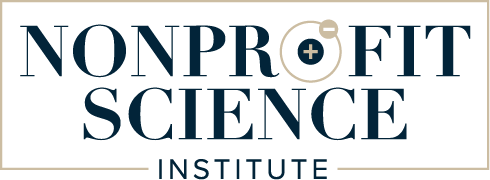One thing that has irked me about the nonprofit sector ever since my first day of employment is that while the majority of people working in the space identify as female, those in charge- the executive directors, the board chairs, c-suite- they all tend to be male. This is particularly true at large organizations.
This huge disparity is not only hurting people who identify as female, it’s hurting every minority, it’s hurting our nonprofits, and it’s hurting the communities we serve. Research tells us women are more likely to exhibit transformational leadership which is exactly what we need to inspire staff and stakeholders, teams led by women collaborate better, and nonprofits led by women have higher operating margins.
So, as Women’s History Month comes to an end, the problem we’ll be tackling today is: How can we get more women in nonprofit leadership positions?
Here’s what you can expect to take away from this episode…
⦿ An understanding of what stereotype threat is
⦿ What interventions can help prevent stereotype threat from compromising leadership performance
⦿ The most important factor for getting more women nonprofit leadership positions
SNEAK PEEK AT THE EPISODE…
⦿ [3:21] Stereotype threat is a phenomenon that occurs when people are aware of a negative stereotype, are worried they will confirm the negative stereotype, and this anxiety undermines their performance such that they end up confirming the negative stereotype.
⦿ [7:05] These are all mental resources that could otherwise be used to improve performance but because the resources are diverted elsewhere, working memory and attention suffer and thus performance suffers.
⦿ [9:15] Taking these two models together, the authors propose three categories of interventions.
⦿ [12:05] Based on their analysis of the literature, the team found that while all interventions did improve performance under stereotype threat, belief-based interventions were the most effective.
⦿ [15:34] All five forms of social support offer some protection against stereotype threat and its negative psychological consequences, but how effective are each of these?
⦿ [17:48] Putting it all together, if we want to see more women in nonprofit leadership, we need to see women in nonprofit leadership.
RATE, REVIEW, AND FOLLOW
Are you subscribed to our podcast? If you’re not, I invite you to do that today. I’m adding a bunch of new, information-packed training episodes into the mix and I don’t want you to miss any of it! Click here to subscribe in Apple Podcasts!
And, if you got a lot of value out of this episode, I would be so grateful for a review on Apple Podcasts. Reviews help others find the Nonprofit Science Podcast and helps me support others just like you. Simply click here, open the show up in Apple Podcasts, select “Ratings and Reviews” and “Write a Review” to let me know what your favorite part of this podcast is. Thank you so much!
LINKS MENTIONED IN THIS EPISODE:
⦿ Article: Stereotype threat and women’s work satisfaction: the importance of role models
⦿ Article: Effectiveness of stereotype threat interventions: A meta-analytic review
⦿ Article: Stereotype threat engenders neural attentional bias toward negative feedback to undermine performance
⦿ Article: The White House Project: Benchmarking Women’s Leadership in the United States
⦿ Download The SIGNALS Framework FREE e-book


